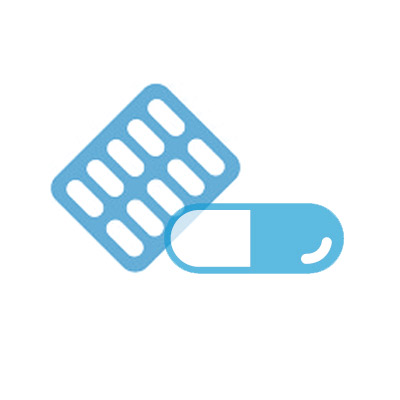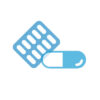Description:
Indications of Cepharol 250mg Capsule
Acelex 250mg Capsule is prescribed to treat the following infections caused by susceptible organisms-
- Acute and chronic bronchitis, as well as infected bronchiectasis, are examples of respiratory tract infections.
- Acute and chronic nephritis, cystitis, urethritis, and prostatitis, as well as prevention of recurring urinary tract infections, are all examples of genito-urinary tract infections.
- Staphylococci and/or streptococci cause skin and soft tissue infections.
- Otitis media, mastoiditis, sinusitis, follicular tonsillitis, and pharyngitis are all examples of ear, nose, and throat infections.
- Staphylococci and/or P. mirabilis cause bone infections.
Pharmacology of Acelex Cepharol 250mg
Cephalexin is a semisynthetic analog of the antibiotic Cephalosporin C. It kills germs by interfering with bacterial cell wall production. Peptidoglycan is a heteropolymeric substance that gives mechanical stability to the cell wall. The last stage of peptidoglycan production includes the completion of cross-linking, and the terminal glycine residue of the Pentaglycine Bridge is connected to the pentapeptide’s fourth residue (d-alanine). Penicillins and cephalosporins block the transpeptidase enzyme, which conducts this step. As a result of the weakening bacterial cell wall, the cell expands and ultimately ruptures. Cephalexin is a first-generation cephalosporin that is administered orally.
Cepharol 250mgCapsule Dosage & Administration
Adult:
- The usual dose is 250 mg to 500 mg every 6 hours.
- For skin and soft tissue infections, streptococcal pharyngitis, and uncomplicated cystitis, in patients over 15 years of age: 500 mg of the drug may be administered every 12 hours.
- In severe or deep-seated infections the dose can be increased from 3 g to 6 g daily.
- Children: The dosage range is 25-100 mg/kg/day in divided doses to a maximum of 4g daily.
Children’s Weight Recommended Dose:
- 10 kg (22 Ibs): 62.5 mg to 125 mg qid or 125 mg to 250 mg bid
- 20 kg (44 Ibs): 125 mg to 250 mg qid or 250 mg to 500 mg bid
- 40 kg (88 Ibs): 250 mg to 500 mg qid or 500 mg to 1 g bid
For streptococcal pharyngitis, skin, and soft tissue infections, and in patients, over 1 year of age, the total daily dose may be divided and administered every 12 hours. In the therapy of otitis media 75-100 mg/kg/day in four divided doses may be required. In the treatment of ? hemolytic streptococcal infections, a therapeutic dosage of the drug should be given at least for 10 days.
Contraindications
Cephalexin is not recommended for people who have a history of hypersensitivity to the cephalosporin antibiotic class.
Cepharol 250mg Capsule Side Effects
Nausea, vomiting, diarrhea, and stomach pain are some of the side effects. Pseudomembranous colitis symptoms might occur during or after antibiotic therapy. Rarely, skin rash, angioedema, an increase in serum aminotransferases, eosinophilia, and neutropenia have been observed. The therapy may result in superinfection with resistant microorganisms, notably candida.
Pregnancy & Lactation
Category B Pregnancy. Cefalexin may be administered during pregnancy if it is deemed necessary. Because cefalexin is detected in nursing mothers’ milk, it should be used with caution when provided to nursing mothers.
Precautions & Warnings
In individuals with renal impairment, cefalexin should be used with care. Under such circumstances, careful clinical observation is required because the safe dosage may be lower than generally suggested. The urine of Cefalexin patients may show a false positive response for glucose when tested with a copper reduction reagent. Positive Coombs test findings have been reported. Although there has been no indication of teratogenicity in animal studies, Cefalexin may be administered during pregnancy if it is deemed necessary. Because cefalexin is detected in nursing mothers’ milk, it should be used with caution when provided to nursing mothers.
Storage Conditions
It should be kept in a cold, dry location.







Reviews
There are no reviews yet.